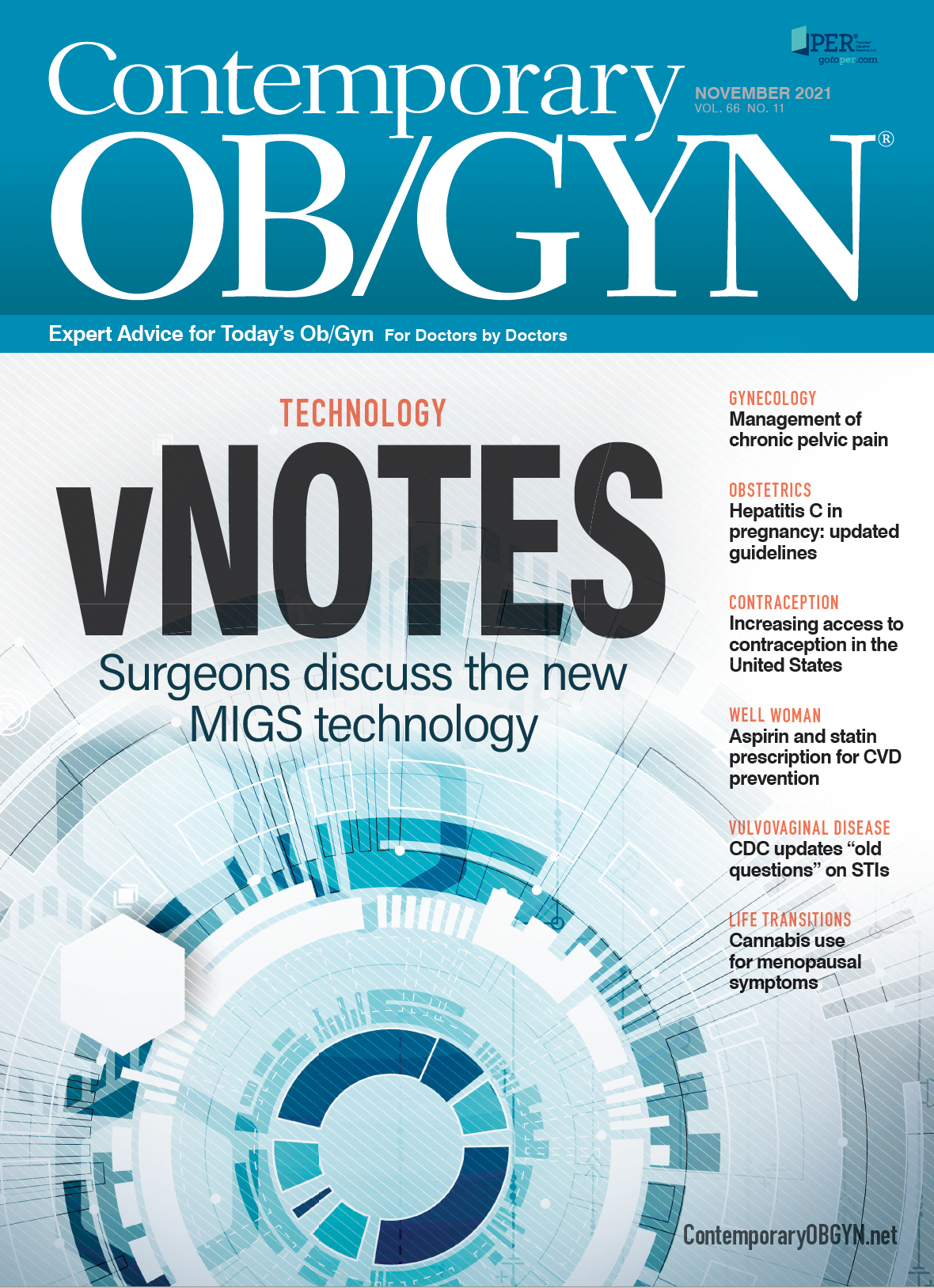Robotic-assisted surgery for gynecologic procedures
“Today, many of these cases are done as open surgery, including approximately 60% of all hysterectomies performed globally, despite the clear benefits of minimally invasive surgery, which includes fewer complications, a shorter hospital stay, and a faster return to normal activities,” Peron told Contemporary OB/GYN®.
The first gynecologic procedures with the Hugo robotic-assisted surgery (RAS) system were performed in Panama in July 2021, providing patients with a new minimally invasive treatment.1 The modular, multiquadrant platform from Medtronic plc is designed for a broad range of soft tissue procedures, including hysterectomies and myomectomies.
“As an ob-gyn [obstetrician-gynecologist], I am especially passionate about the positive impact that the Hugo system can have on women’s health,” said Carla Peron, MD, chief medical officer of surgical robotics at Medtronic. “The technology is also unique and thoughtfully designed, based on surgeon and hospital leader input to meaningfully address the greatest barriers to robotic adoption and use.”
Although surgical robots have been commercially available for 20 years, they are used in less than 3% of surgeries, according to Medtronic, and used only once daily on average, mainly because of cost.2
Six cases were performed at Pacifica Salud Hospital in Panama City and comprised hysterectomy, myomectomy, and ovarian cystectomy procedures.
“Today, many of these cases are done as open surgery, including approximately 60% of all hysterectomies performed globally, despite the clear benefits of minimally invasive surgery, which includes fewer complications, a shorter hospital stay, and a faster return to normal activities,” Peron told Contemporary OB/GYN®.
Because of the system’s modular platform, surgeons can mix and match components for RAS and laparoscopic cases. The system has 4 individual arm carts, each with 7 degrees of motion, and an open console for visualization. The Hugo system also can be moved between operating rooms.
The modularity of the Hugo system offers flexibility for surgeons to access the pelvic cavity, according to Peron, along with greater precision and high-definition 3D visualization. The system is designed to be compatible with the same technologies found in laparoscopic and open procedures.
Training options range from e-learning and simulations to in-person labs. The system is also compatible with Medtronic’s Touch Surgery Enterprise, a cloud-based surgical video capture solution that allows surgeons to seamlessly record, analyze, and share surgical video. “Touch Surgery Enterprise is a force multiplier when you think about the potential unlocked by combining this technology with the Hugo system today and in the future,” Peron said. “Ultimately, though, we believe surgeons should determine the best approach to meet each patient’s unique needs, and that might mean a robotic procedure is not always the best option.”
The Hugo system joins a portfolio of gynecological products from Medtronic designed to enable less invasive surgical treatment for a range of conditions, including abnormal uterine bleeding, uterine fibroids, and uterine and ovarian cancer.
“I am excited that our company can offer surgeons unprecedented choice in trusted technologies across open, laparoscopic, and robotic-assisted surgery,” Peron said.
Medtronic has started the Hugo system global patient registry, which will collect data to monitor product performance, patient safety, and clinical outcomes in a real-world setting.
The company also has investigational device exemption approval to proceed with an expanded clinical trial of the Hugo system for urological procedures in the United States.
References
- First gynecological procedures performed with medtronic hugo™ robotic-assisted surgery system. Medtronic News. Accessed October 28, 2021. https://news.medtronic.com/2021-07-29-First-Gynecological-Procedures-Performed-with-Medtronic-Hugo-TM-Robotic-Assisted-Surgery-System
- Medtronic hugoTM robotic-assisted surgery system receives european ce mark approval. Medtronic News. Accessed October 28, 2021. https://news.medtronic.com/2021-10-11-Medtronic-Hugo-TM-Robotic-Assisted-Surgery-System-Receives-European-CE-Mark-Approval

